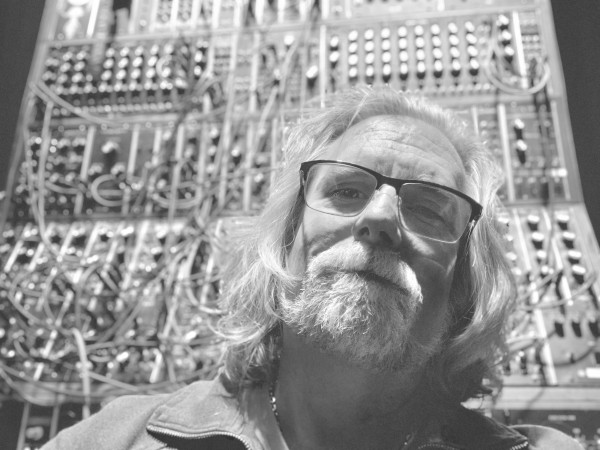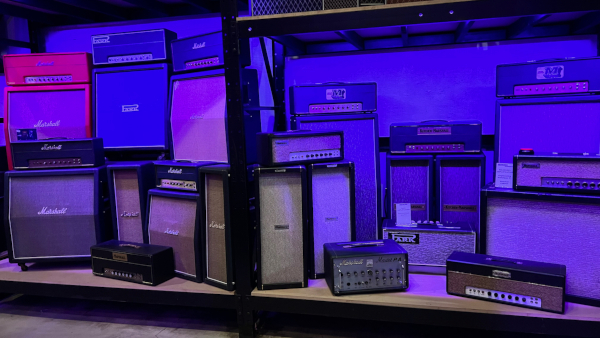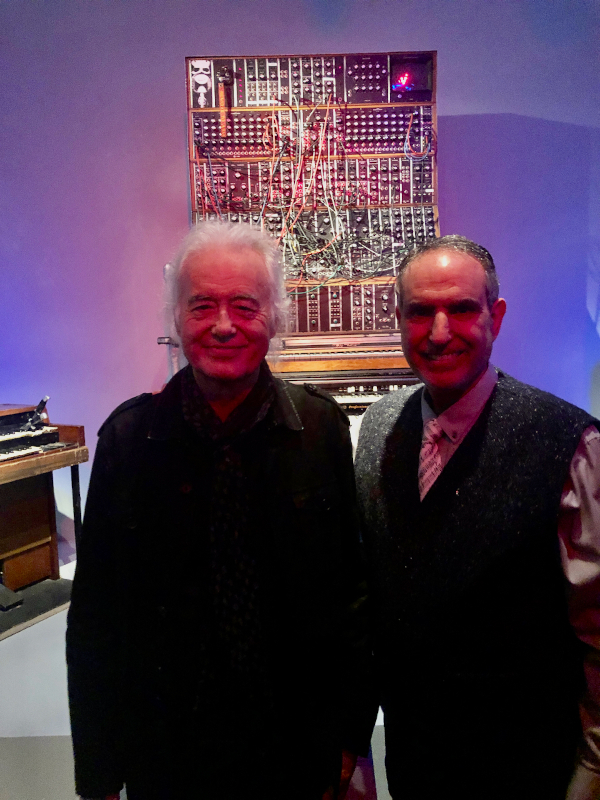
The Nineth episode dedicated to the discovery of Research Centers, Museums and Recording Studios where electronic music in all its forms is studied and practiced. First: Museo del Synt Marchigiano (here). Second: SMEM Swiss Museum for Electronic Music Instruments (here). Third: MESS Melbourne Electronic Sound Studio (here). Fouth: Nakatsugawa Korg Museum (here). Fifth: Museo della Farfisa (here). Sixth: VSM Vintage Synthesizer Museum (here). Seventh: Leonardo Gabrielli – CIM: Colloquio di Informatica Musicale XXIII (here). Eighth: Francesco Mulassano – SoundMit – International Synth Event (here). Today is the turn of Drew Raison, Executive Director of EMEAPP – Electronic Music Education and Preservation Project, located in Harleysville, Pennsylvania, USA. Before inviting you to read the interview, I would like to thank Daniela Germani for her help in the Italian English translation
When wasEMEAPP Electronic Music Education and Preservation Project founded and why?
It happened organically, really. The curator Vince Pupillo, Sr. had been collecting gear for many years with great success, but then the ‘Holy Grail’ of synthesizers became available, the Minimoog prototypes. Due to the nature of their ownership, they were not able to be sold or transferred on the open market, rather they had to go to a proper nonprofit that has a mission that focuses on such instruments. Putting all the pieces together, he conceived EMEAPP to accommodate the purchase and get this innovative organization on the road.

I was brought on at the very beginning of EMEAPP as Executive Director to begin structuring the organization. This was tricky as there are no similar organizations on which to base our development or direction. The one thing that we knew was that we could harvest information from this collection and bring it to the world. So we dove in headfirst.
We were a very tight-knit group in the beginning. Over the past four years, we have broadened our crew and developed close relationships with many like-minded individuals and organizations. It has been quite an effort for everyone to get EMEAPP to where it is today. I’m not just talking about the collection, I’m talking about the educational programs, developing relationships with high schools, colleges and universities as well as seeking out strategic partnerships with other organizations and individuals.
What was the inspiration for EMEAPP?
Simply put, a love for the creation and enjoyment of music!
Where is it?
EMEAPP is located in Harleysville, Pennsylvania, USA. We are about 40 minutes north of Philadelphia. Our complex is a whopping 2,800 square meters chock full of some of the coolest gear on earth!
What instruments and collections does the EMEAPP have?
Generally speaking, we have collections that focus on synthesizers, electromechanical instruments (electric pianos, clavinets, etc.), tube and solid state amplifiers, stompboxes and effects and most recently, vintage audio recording and PA gear.
And then there’s the archive, a treasure trove of design documents, schematics, manuals, service documents and beautiful marketing materials. We also have a massive collection of vinyl records focusing on electronic music and recordings from the 1950s, 1960s and 1970s. We also have a collection of one-of-a-kind recordings from the past.
Our curator Vince Pupillo, Sr. has also put special emphasis on ultra-rare design prototypes. These units tell a very special story about the development and history of many important instruments. The prototype highlight here would be the four Moog Minimoog prototypes, this instrument truly changed the trajectory of live and studio synth performance. They also helped launch EMEAPP.
But to name-drop, we have a lot of Keith Emerson’s gear including many of his significant Hammond organs. And yes, we have his legendary Moog modular synthesizer and his split Minimoog. We even have a Yamaha GX-1, a rare instrument that Keith loved to use on stage and in the studio.
Frank Zappa’s gear appears throughout EMEAPP as well, we use his kitchen table in our conference room! His Marshall and Vox guitar amplifiers are all on display in Amp City along with his effects switching system. Sitting on top is his long-lost (but recently discovered) Electro Wagnerian Emancipator, a guitar synth-like harmonizer.
Right around the corner from Zappa’s exhibit sits royalty from the band YES. Rick Wakeman’s keyboards are all on display including the actual Hammond organ that he played on the album “Fragile” and the organ solo on “Roundabout”. Guitarist Steve Howe and bassist Chris Squire’s Marshall amps and cabinets are also on display, as is one of Squire’s iconic Rickenbacker basses. Howe’s painted Fender Showman amps grab your attention and YES’s first Echoplex tape delay sits proudly in plain view.
Also at EMEAPP, you will find Jan Hammer’s Fender Rhodes electric piano from his time in the Mahavishnu Orchestra, stringed instruments from Eric Johnson and The Who’s Pete Townshend and John Entwhistle. We also have Entwhistle’s personal Hammond B-3 organ that toured with The Who, Tony Banks’ (Genesis) Emulator II and Rainbow’s early Roland synth brought to us by David Rosenthal, Billy Joel’s music director.
One highlight of an EMEAPP tour includes a bunch of beautiful tube amplifiers that belonged to Eric Clapton, Walter Becker (Steely Dan), Lindsay Buckingham (Fleetwood Mac), Greg Lake (ELP), Tommy Bolin (Deep Purple, James Gang), Neil Young, Glenn Hughes (Deep Purple, Black Country Communion), Jack Bruce (Cream) and Mick Ronson (David Bowie and the Spiders From Mars).
But the one things that lights everyone up is actually small enough to hold in your hand, it is a wah-wah pedal from the 1960s. Why is it significant? Because it is the one that Jimi Hendrix played on stage at Woodstock in 1969. It sits nestled into a display of other gear from Jimi that includes a beautiful old trunk stenciled “J. H. Exp”.
But the collection goes on and on beyond that!
What is the EMEAPP Institute?
The EMEAPP institute was developed by Dr. Ben Luce to facilitate university-grade research on some of the objects in the collection. He spearheaded a multifaceted research project on the Moog Minimoog, the results of which can be viewed at www.emeapp.org in our feature article section. Electronic music pioneer, Don Slepian is also contributing to the Institute, as has Jim Scott, Tom Rhea and Tim Warneck.
Are there any interesting stories about the EMEAPP?
I can tell you that every day at EMEAPP can be radically different from the next. One day last week we were elbows-deep into a vintage Hammond C3 organ, the next day we did a live video and multi-track audio shoot of the band Manticore to celebrate the 50th anniversary of ELP’s ‘Trilogy’ record. The day after we were dusting, sweeping and cleaning, the next we gave a tour to a British pop-punk artist who visits us regularly and we edited the video for an upcoming Sonic Test Drive episode for emeapp.org.
We always have unique projects underway in our main workshop. Right now we have a beautiful pair of vintage synths getting ready to power up, a Synclavier 9600 and a Fairlight Series III. They are sitting right next to a vintage Eminent Unique 310 organ, the source for the famous “string ensemble” instruments and sounds.
I can also tell you that ‘adaptive reuse’ is a part of our daily lives as our main building wasn’t built to be a museum and learning center. It was originally built to be an abattoir and then sat empty for a decade. Our curator Vince Pupillo, Sr. secured the empty building and converted it into cold storage and offices for his food production business. At the same time the collection was growing, so was his business, so the food company moved out and the collection took over. A perfect scenario for EMEAPP!
What is the best way to experience the EMEAPP?
If you are in the New York/Philly/Washington area, a personal tour is the best. It typically takes 2-3 hours and will make your knees weak! I recently started giving virtual tours via Zoom and the attendees have been raving about it. I make custom tour videos for each presentation; people can jump in with questions. It’s the next best thing to being here.
Is it open to external collaborations?
Our ears are wide open! We regularly work with individuals and bands to assemble unique music, graphic and video projects. Artists can also book our recording studio for musical releases, we can even shoot live bands in our main room. Feel free to reach out, it doesn’t matter if you’re local!
Do you have any possible developments in mind? For example a book or a documentary that tells its story through interviews and videos?
We regularly take on interviews, news stories, television and radio segments, webzines and bloggers, just search EMEAPP and see what pops up.
As luscious as an EMEAPP book would be, it is just too much of an undertaking for us to handle properly. We have taken major roles in book projects, you can see our photographic work in SYNTH GEMS 1(https://bjooks.com/products/synth-gems-1-exploring-vintage-synthesizers) and CLASSIC KEYS (https://www.tamupress.com/book/9781574417760/classic-keys/).
Do you have any projects or exhibitions in progress?
We do, but I can’t tell you about a few of them yet 😉 But I can tell you that we are developing a DIY and kit exhibit that shows the ingenuity of people that didn’t have the thousands of dollars to purchase synthesizers back in the day. We are also working on an exhibit featuring the Hammond Novachord from 1939, the first polyphonic synth available on the market.
We continue to expand our audio and video capabilities, this is how EMEAPP is able to reach the world with new music. Our new control room is open and operating every day, we look forward to all the great music that will emerge!
Please visit us at www.emeapp.org and join us as a free member. You can also find us (and watch our daily progress) at www.facebook.com/emeapp and www.instagram.com/emeapp. If videos are more your thing, find the EMEAPP channel at www.youtube.com.
Link: EMEAPP Home Page
Link: EMEAPP Facebook Page
Link: EMEAPP Instagram Profile
























